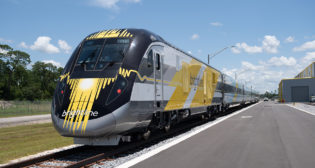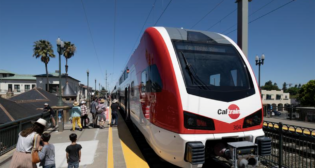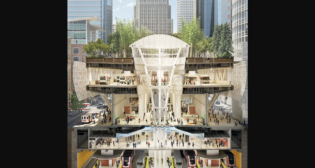
Spuyten Duyvil: Why? A safety expert weighs in
Written by William C. Vantuono, Editor-in-ChiefPearl Harbor. Dallas. 9-11. Lac Mégantic. Now we have “Spuyten Duyvil” to add to the collection of names that, before they became linked to tragedy and loss of life, were simply locations, or dates. You’ve probably read many of the press reports (including what Railway Age has covered) and seen the videos
on Metro-North’s horrific Dec. 1 wreck. The accident, which now appears to be caused by human error, has turned into a media circus involving politicians and rail union reps, the latter now censured by the National Transportation Safety Board for compromising “confidentiality of investigative information” and being removed from participation in the investigation.
While I don’t claim to be a railroad safety expert and I’m not a signal engineer, I know enough about cab signals and speed codes and alerters and automatic train stop to try to understand what happened—and to ask, why? This morning I was updating our on-line report with the latest information on the crash when I received a message from a railroader who, through personal experience, is more than qualified to address many of the questions swirling around Spuyten Duyvil.
And so, I share with you the observations of a veteran railroader:
“Since the tragic derailment of a Grand Central-bound Metro-North train Sunday morning on the Hudson Division at Spuyten Duyvil curve, I’ve asked myself, why? Why in 2013 would a train’s safety and operation be totally in the hands of an engineman without an overriding backup system to ensure the application of a emergency brake when the train is moving faster than permitted operating speed?
“I have a great deal of respect for the operations personnel and management of Metro-North and the Metropolitan Transportation Authority, and am not criticizing them. For that railroad, and the MTA as a whole, safely carries millions of riders a day. This accident is not only a Metro-North problem, it’s an industry problem, for each day thousands of freight and passenger trains are operated with the safety of the train, passengers, crew, freight, etc., entirely reliant upon on the operational expertise of the engineer. Experience, mental and physical health, fatigue, and other factors play critical roles in the safety of each train.
“I feel personally affected by the accident, because every workday morning I ride Metro-North, in the car just ahead of the locomotive, rounding Spuyten Duyvil curve at approximately 6:10 a.m. Usually half asleep, I don’t worry about my safety. This is so because I am particularly aware of Metro-North’s track enhancement program, and know that the sharp curve at that location has been rebuilt with CWR and concrete ties. The cars always glide smoothly through that curve as we leave the Hudson and meet the banks of the Harlem River. Lateral movement through that curve is hardly noticeable. The New York Central built this ‘Water Level’ right-of-way in the 19th century, and thousands upon thousands of trains have plied these rails for more than 100 years without incident.
“I am an instructor with the Transportation Safety Institute, and teach a Rail Incident Investigations course. While reviewing the photos from the wreck, I concentrated on the overturned cars. Speed, I believed, was the primary causal factor. Overturned passenger cars throughout practically an entire seven-car consist certainly struck me and reminded me of the course that we teach at TSI, and causal factors for derailments and collisions.
“Years ago, I worked for the Penn Central and Amtrak. I was a locomotive technician assigned to ride high-speed electric-multiple-unit (EMU) Metroliners (see photo) and various classes of electric passenger and freight locomotives. I rode between New York (sometimes New Haven) and Washington, D.C. every workday. My job was to troubleshoot various systems aboard any equipment that took power from the catenary. Every train was protected by a cab signal system that was developed and placed into service by the Pennsylvania Railroad in the 1930s.
“With the development of new high-speed electric locomotives in the early 1930s capable of hauling passenger trains at 100 mph, signal engineers with foresight developed and designed a cab signal system to protect PRR trains. The cab signal system included wayside position light signals that provided several aspects—Clear-Track Speed (which could be above 100 mph, depending on location); Approach Medium-Restricted to 45 mph; Approach-Restricted to 30 mph; and Restricting-Stop, then proceed to the next wayside signal at 15 mph with permission from the tower. The engineman had these aspects duplicated in the operating cab.
“The system was simple: A low current was transmitted through the running rails. Pickup devices on the front of the locomotives would read the current and transmit it to the onboard cab signal system, which would display an aspect in the cab. When an engineman received a restricting signal, he had to immediately apply the train line brakes. Also, an alerter sound had to be acknowledged within approximately 20 seconds. Otherwise, the system would take over and apply the emergency brakes. Safety at its best—developed in the 1930s—and still employed (with upgrades, of course) by Amtrak and the commuter railroads (NJ Transit, SEPTA, etc.) that operate on the Northeast Corridor. The Metro-North Hudson Division right-of-way, inherited from the New York Central, does not utilize this type of cab signal system.
“Each of us has a memory that we will never forget, an incident that is etched in our minds. Having worked on the Northeast Corridor for eight years, I have quite a number of memories. One is etched in my mind: It was the summer of 1979. I was working as a technician aboard a six-car Amtrak Metroliner EMU out of Washington D.C. The Metroliners were equipped with the PRR cab signal system and a cab alerter. My engineman was the best. He had more than 30 years of experience with the Pennsylvania and Penn Central railroads. I felt totally confident in his abilities and would entrust him with my life.
“My train, No. 118, left Washington, D.C. on time and proceeded at about 105 mph north to Baltimore. I walked through the train to check traction motor amperage readings on each of the six cars. When I completed my work, I proceeded to the head end and spoke with the engineman. After we left Baltimore, I went back through the six-car consist to check air conditioning, lighting, and ride quality, as the Metroliners were equipped with an air bag secondary suspension. Cruising between 105 and 110 mph between Baltimore and Wilmington, Del., I wanted to make sure that the ride was comfortable, with no equipment abnormalities.
“I was crossing the vestibule of the fourth car into the snack bar car when the train went into emergency. I immediately turned around and headed forward toward the cab. Passengers had questioning looks on their faces, and the head brakeman looked concerned as I raced forward to the lead car and the cab. I could smell the odor of burning brake shoes as I passed through each vestibule. The train came to a halt before I reached the head end. I entered the cab at the same time as the conductor.
“We found the engineman slumped in his seat, unconscious. (We later found out that he had a stroke, which he survived). I distinctly remember the sound of the overspeed bell ringing continuously in the cab, the sound of the air expulsion from the emergency brake application, and the cab signal displaying an Approach aspect indicating a 30 mph restriction. Having passed out, the engineman could not acknowledge the restricting aspect and apply the brakes to slow the train. His master controller was in the ‘cruise’ position to maintain a 105-mph speed. Consequently, the cab signal system took control and automatically brought our speeding Metroliner to a halt.
“My conductor looked ahead out of the cab window and whispered, ‘Oh my gosh!’ I looked through the window, and saw the caboose of a Conrail freight train several thousand feet north of our position, on our track. In those days, we still operated freights with electric locomotives on the NEC. The freight was crossing over from our track onto another, so that No. 118 could continue on at 105 mph. I thought, and still think now, what would have happened if the cab signal system had not been there? We were traveling at about 105 mph; the freight, 30 mph at best, through a crossover. Within seconds, we would have collided. So, a cab signal system placed into operation in the 1930s effectively stopped and saved a speeding Metroliner from disaster.”
To clarify, the existing Metro-North cab signal system enforces train separation only. It does not enforce permanent civil speed restrictions (i.e. a 70-mph section of tangent track followed by a 30-mph curve). As consultant Dave Schanoes, a former Metro-North executive. explains:
“All Metro-North trains are equipped with a cab signal/automatic train stop/automatic speed control system with an alerter that requires acknowledgement. All territory on Metro-North east of the Hudson River, save the Danbury and Waterbury branches, is cab signal/automatic train control territory and has been for almost 20 years—which coincides with an FRA mandated change after the Amtrak/Conrail collision at Chase, Maryland. The reason why the cab signal alerter did not sound, and why an overspeed brake penalty did not occur, is because the train was traveling a ‘normal route’ with no trains ahead, requiring a brake application to maintain safe train separation. The Metro-North cab signal system does not include permanent speed restrictions due to curvature, alignment, run-off, or other elements of the track geometry. The cab signal/train stop/speed control system is driven by conditions of occupancy requiring deceleration of a following train, or a divergence in route at an interlocking, where a signal change is precipitated by a change in routing.”
We must also bear in mind that no train control system, no matter how sophisticated, is 100% fail-safe 100% of the time, although it can come very close to that. Anyone who thinks that “nothing bad can ever happen because of the technology that’s been installed” is flirting with disaster. The engineers who designed the Titanic said the ship was unsinkable. Apollo 13 experienced a quadruple systems failure 200,000 miles out because a small liquid oxygen tank thermostat failed. Need I say more?
A new overlay PTC system, supplied by a Bombardier/Siemens joint venture, will be installed throughout the MTA’s two commuter railroads, Metro-North and the Long Island Rail Road. PTC—already in place on much of the NEC (Advanced Civil Speed Enforcement System)—will provide an extra measure of safety, a measure that we now know, because of a tragedy, is critically needed. The contract was announced roughly two weeks before experienced engineman William Rockefeller, apparently during a brief lapse of attention, ran his train off the rails and into the history books of accident reports and statistics.



